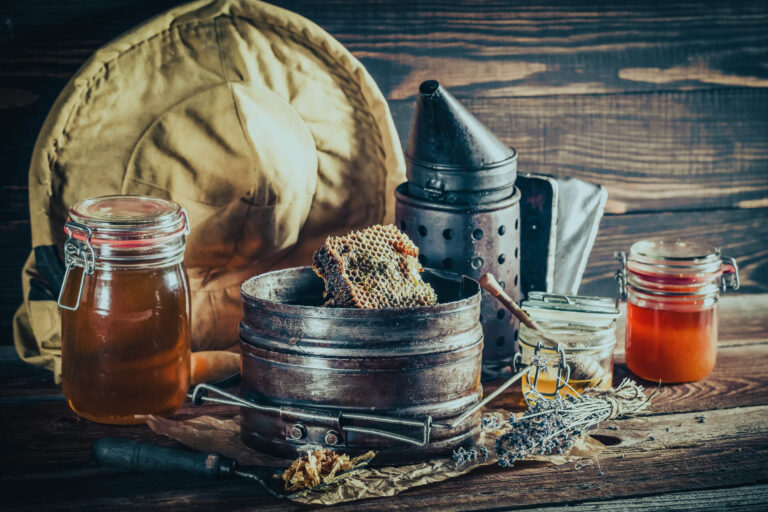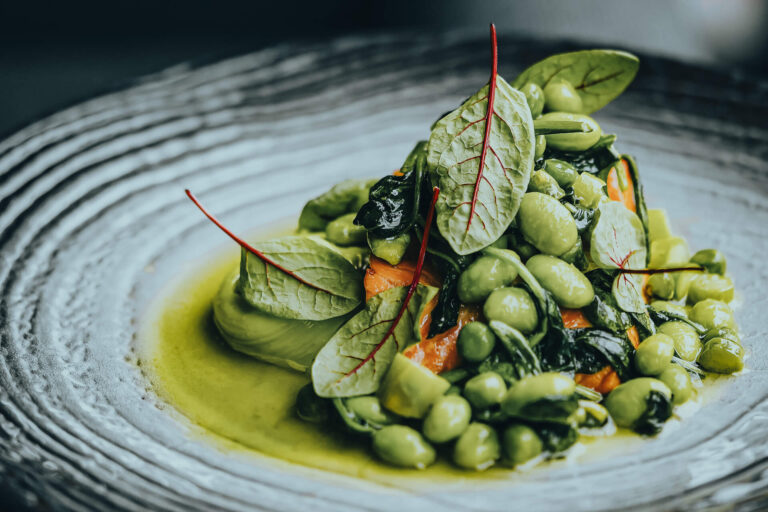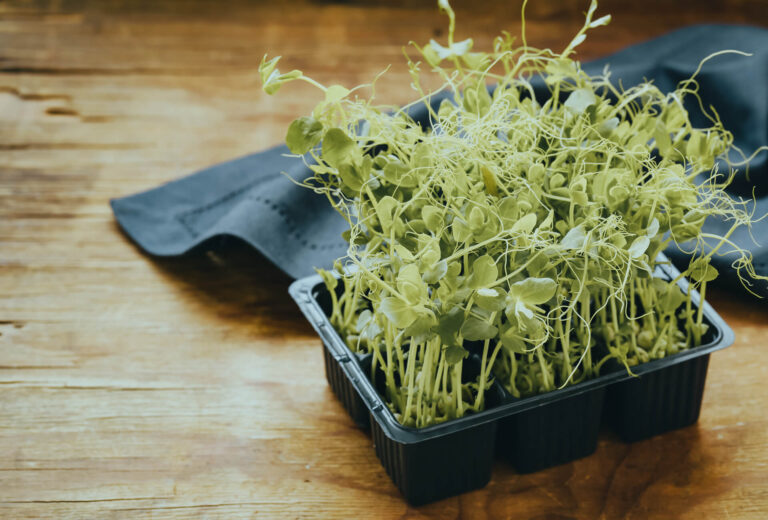The planting and care of sustainable orchards
- Our Sustainable Farm (OSF)
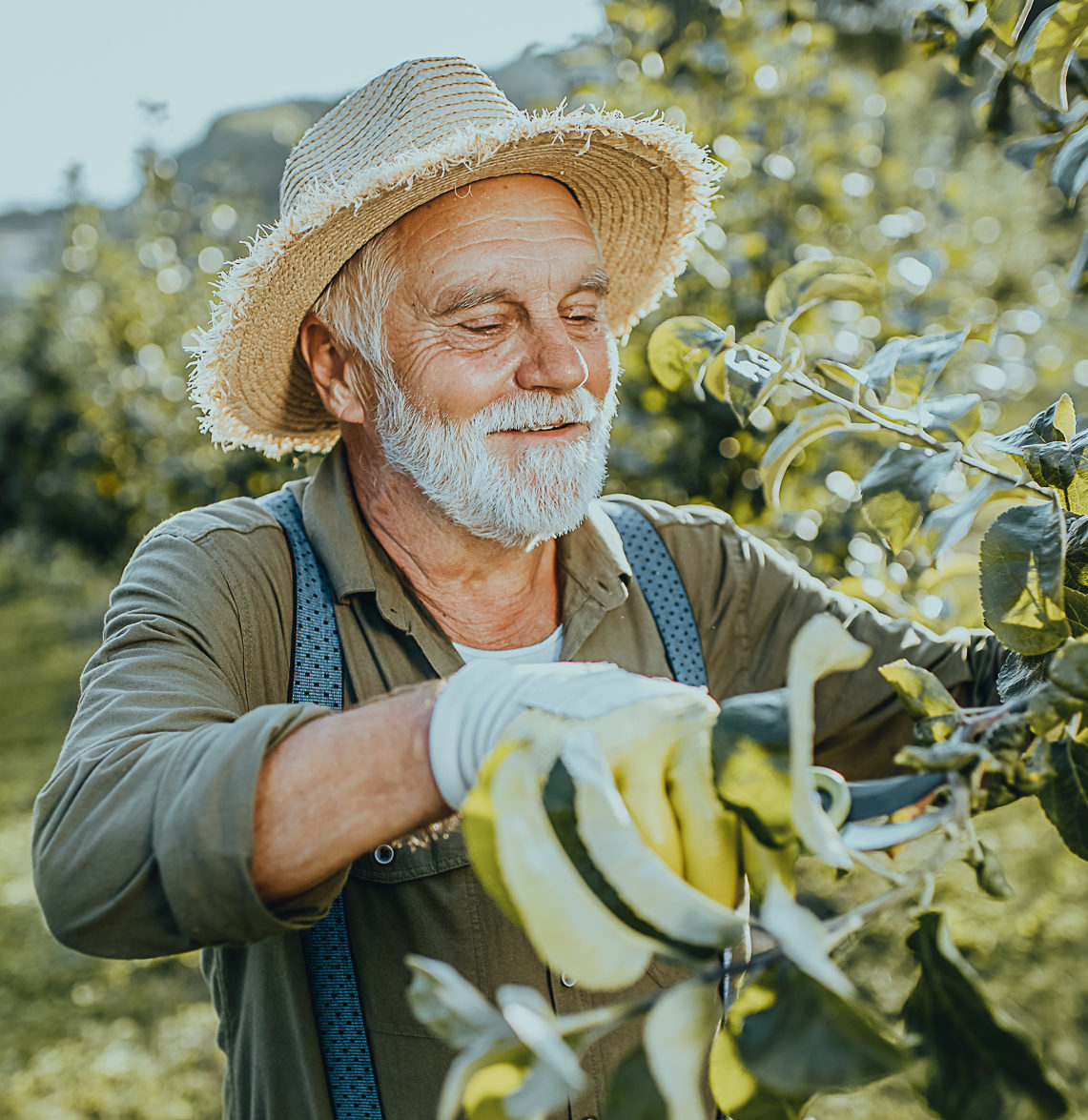
Permaculture and Regenerative Design in Orchard Management
There is nothing quite like growing your own orchard trees. Not only do they reliably provide fresh fruit for you and your family, but they also benefit local wildlife. Additionally, they will improve the value of your property now and for generations to come.
Established fruit trees are relatively easy to care for, require little maintenance, and, best of all, provide big rewards as fall approaches.
Homegrown fruit is luscious and delicious in ways that can’t be fully described. Store-bought fruits can’t even begin to compare to fresh, organically grown orchard fruit.
Today, let’s learn how to sustainably plant and care for heirloom and non-GMO sustainable orchards.

Preparing Your Growing Grounds
Before you plant your fruit trees, there are a few things you can do to optimize the life of your orchard. Besides figuring out how many trees you want to plant, also plan out the following:
Before you begin planting your trees, it’s a good idea to perform earthworks to rearrange your property’s topographical structure as needed. You want to maximize rainfall capture while also creating adequate soil drainage.
Set aside a place where extra rain can collect and be stored for use in farming later in the year. Digging ponds and installing dams are great options.
Fruit trees tend to grow best when planted on mounds or on long berms. This growing method facilitates optimal water drainage, protects the roots, enables more nutrient uptake, encourages deeper root growth, and improves overall vitality.
Mounds and berms are especially important in places where the soil is mostly clay or where it rains a lot every year. Mounds and berms can be made slightly concave in dry or semi-dry areas to catch extra rain. Trenches at the base of the berm can also be used for water capture.
The mound area around the tree should be composed of the best and most nutrient-dense soil to benefit the roots. The mound itself should be around 8 to 12 inches tall with a 2 to 4-foot spread. Stakes can also be employed to stabilize young trees as they establish their roots. If needed, amend the soil.
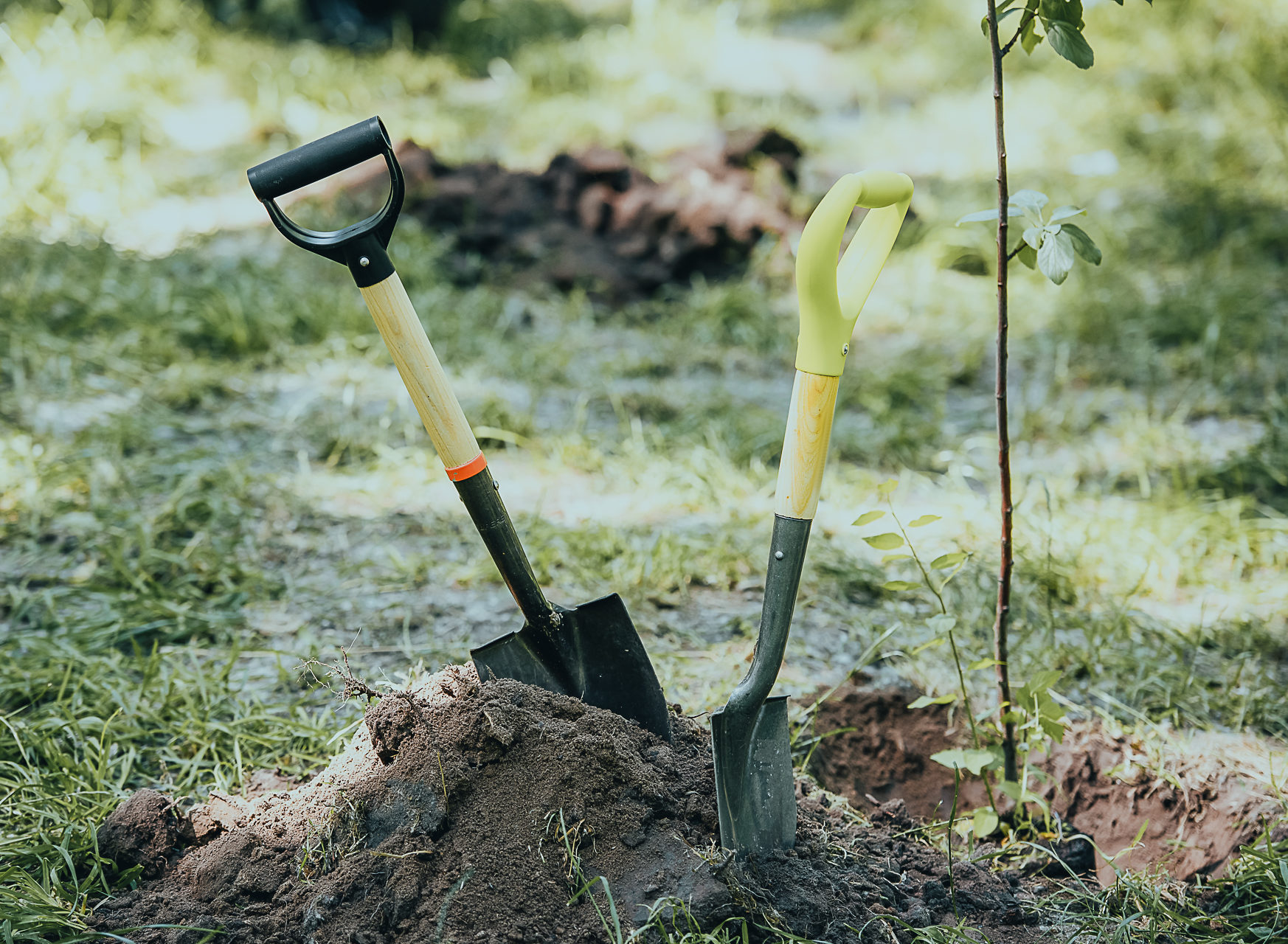

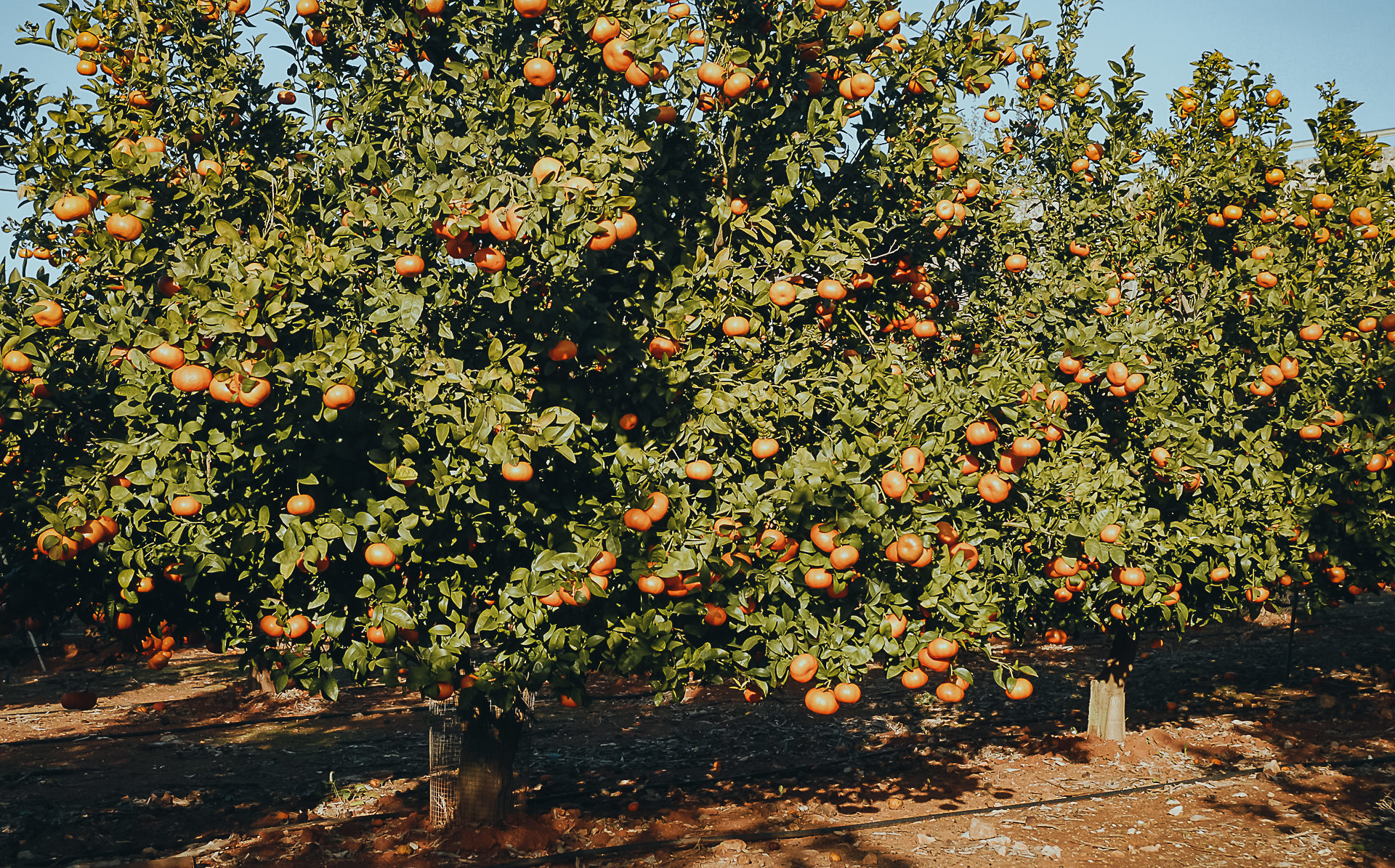
Sustainable Orchard trees need fertile, moist, and well-draining soil
Many growers agree that loam is the preferred soil type. Have the topsoil and subsoil of your site tested. If your soil needs to be amended, you will need to add the appropriate soil nutrients to your orchard growing grounds. For clayey soils, peat moss, coco fiber, and compost can be added to help the soil retain moisture.
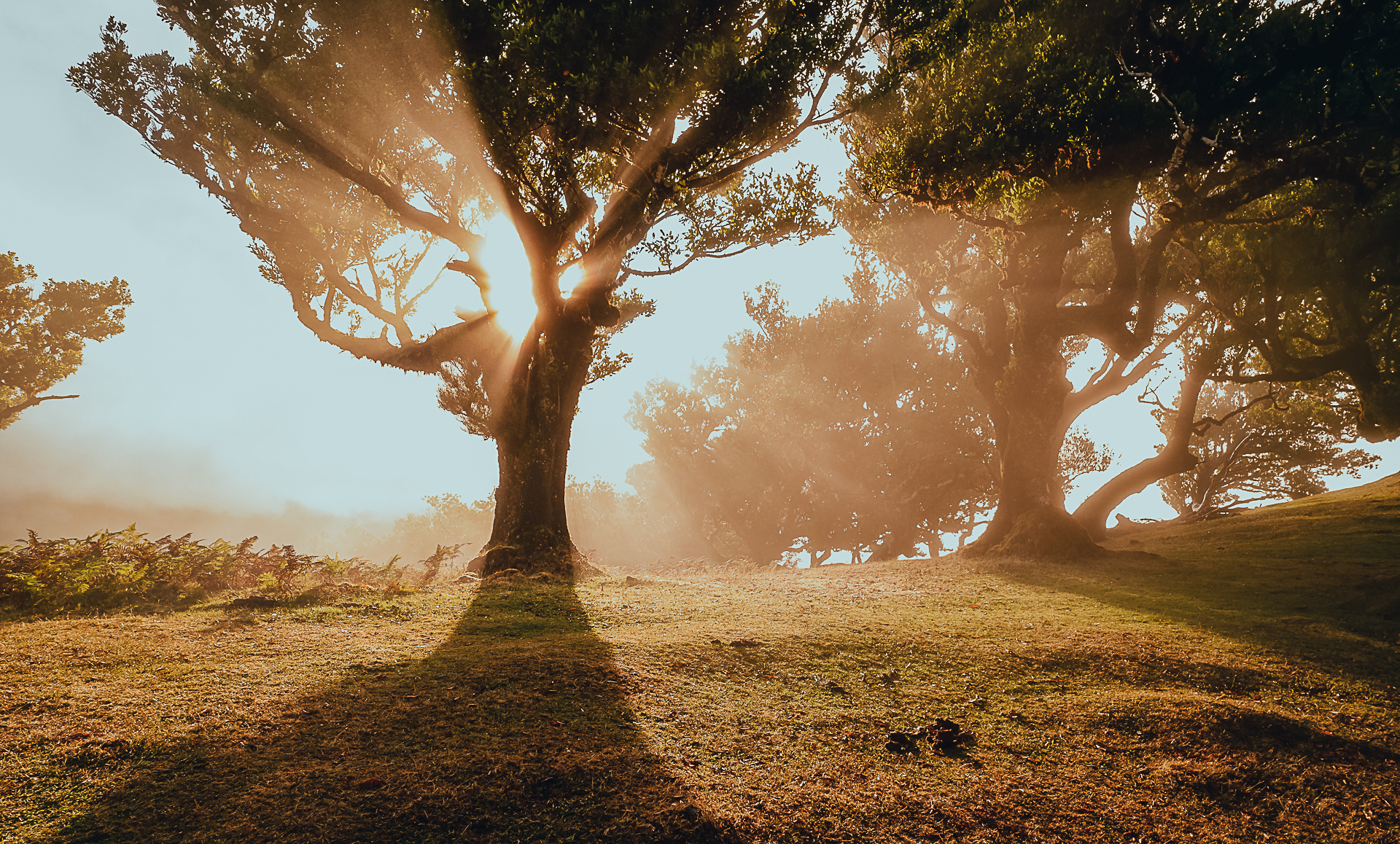
Full sun exposure
Choose a site on your property that provides full southern sun exposure for at least 6 to 8 hours per day. Full sun will help your orchard trees flower more and produce better fruit.

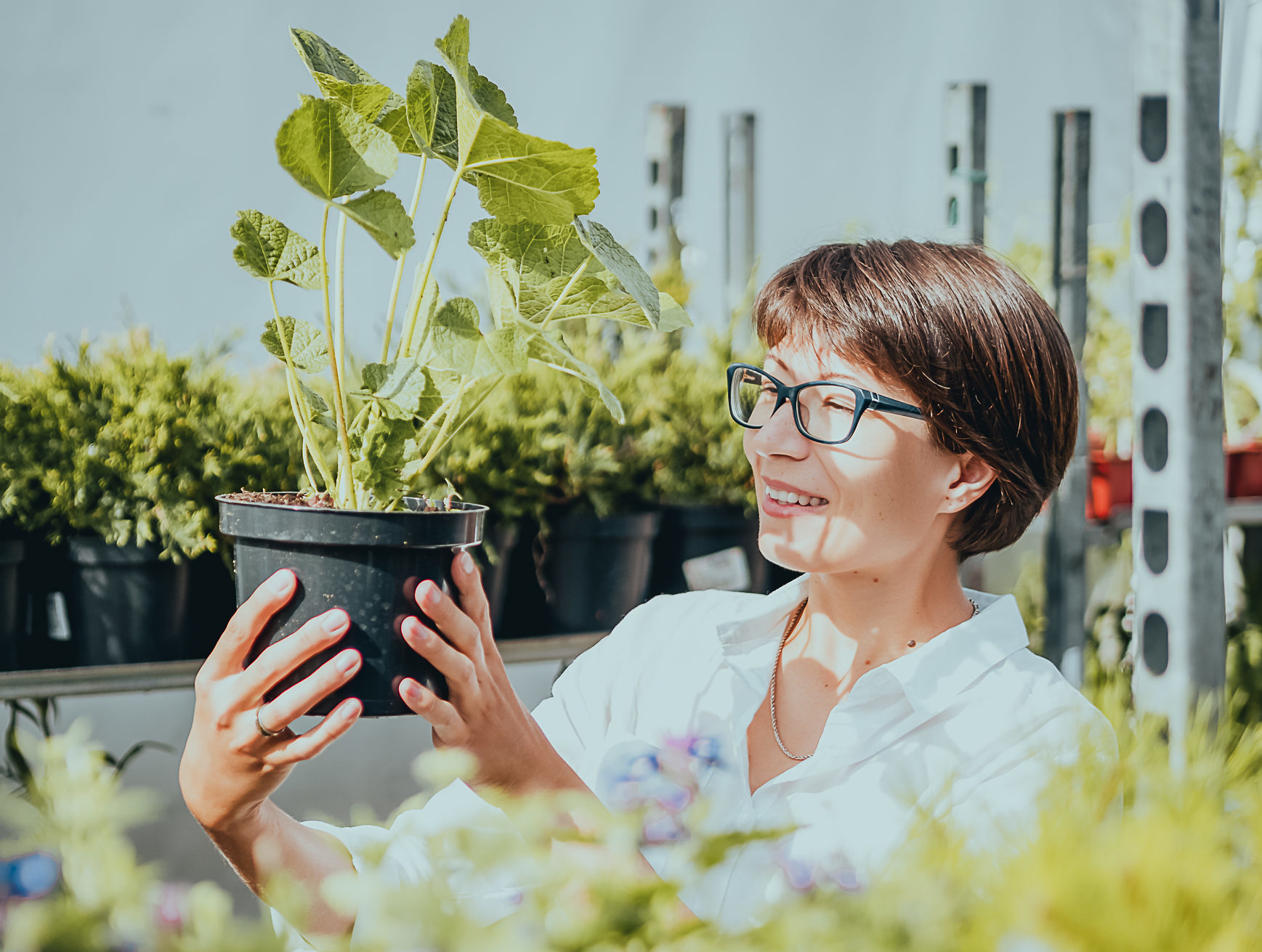
Choosing the Right Tree Varieties
Choose orchard trees that are hardy and native to your region. The reason this is important is that native plants tend to resist pests more easily, and they are better adapted to the extremes of your region’s local climate. Only select organic, heirloom, and non-GMO tree varieties.
When you head out to visit your local plant nursery or grower, be sure to look at the tree label. As sustainable farmers, we want to support heirloom and organic growers. We do this by voting with our dollars. By investing our money, we communicate to plant sellers what we truly desire.
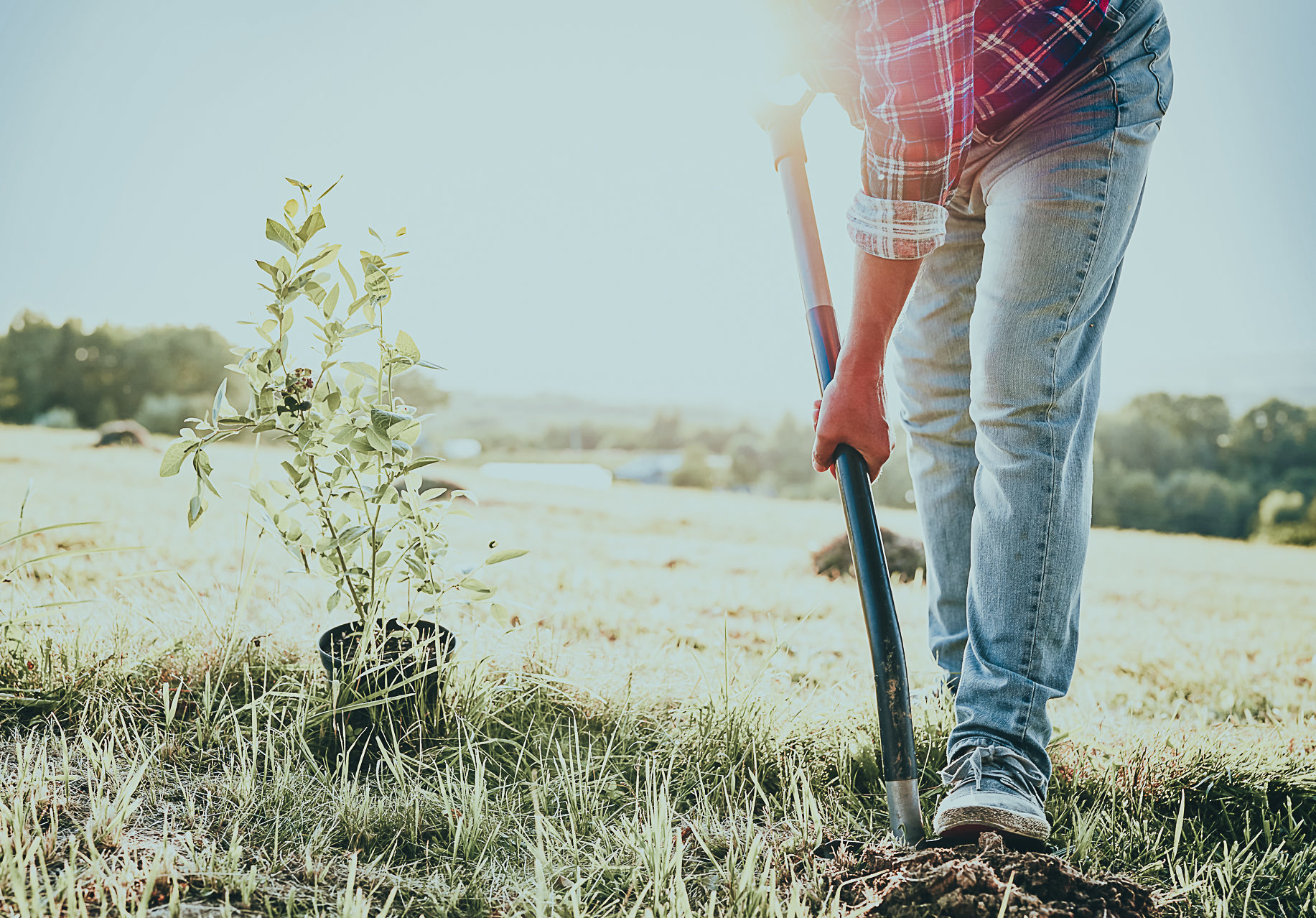
There is a huge market for genetically altered organisms, but these plants can be harmful to native wildlife, and their propagation is illegal. Even if it were possible, propagation is difficult or impossible by natural means, as the plants have often be en genetically altered to be sterile. This wholly benefits the corporation and robs the grower.With self-reliance in mind, always choose plants that you can legally sell, use for commercial purposes, and propagate on your own. In this way, we can resist the corporate takeover of food.
When planting an orchard, we want to think ahead. We want to plant groves and clusters of trees that will last for generations. We also want those future generations to have the right to reproduce and expand their orchard based on the trees we plant today.

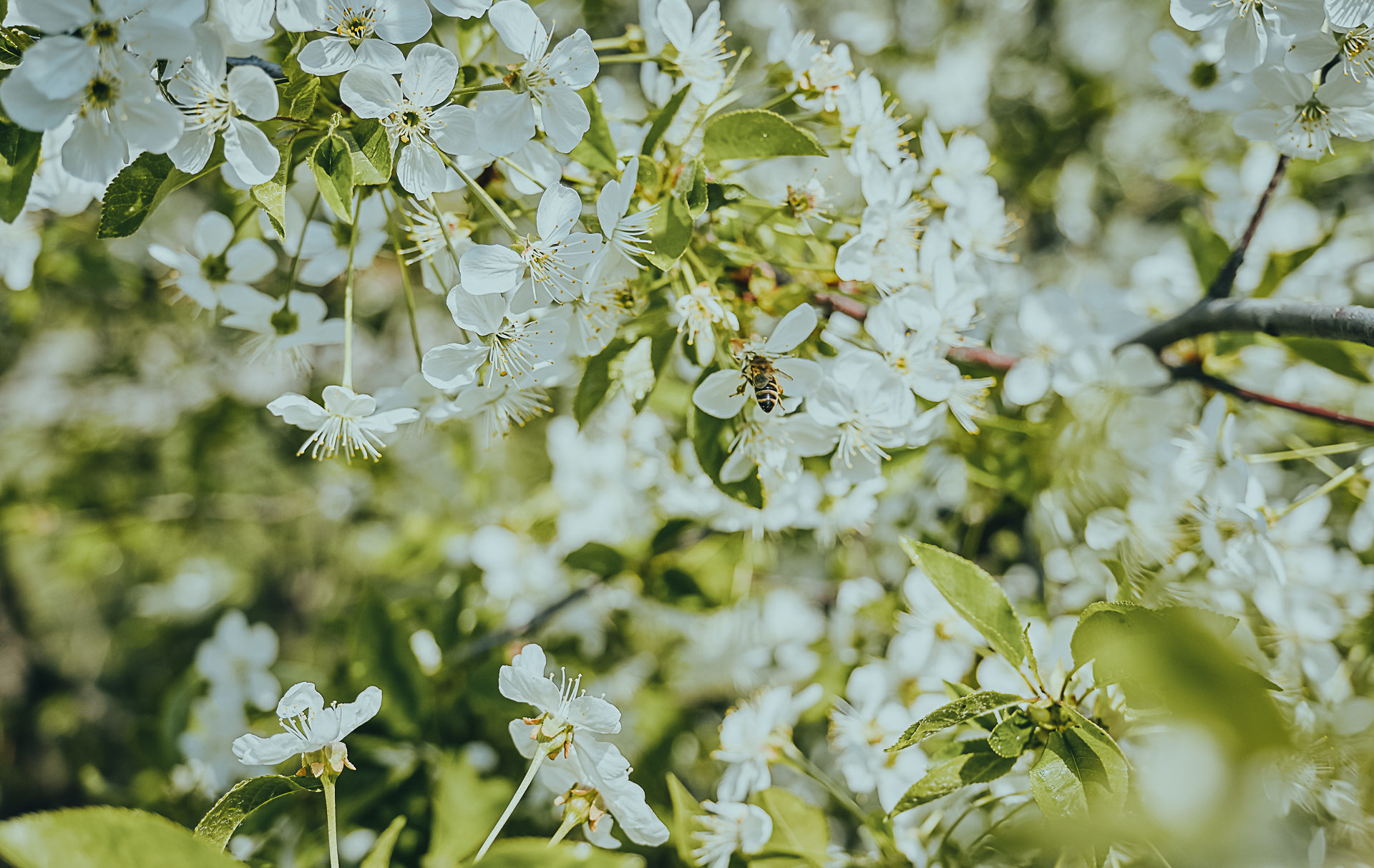
Non-Self-Pollinating vs. Self-Pollinating
If choosing non-self-pollinating fruit trees, you will also want to purchase trees of a different variety that are also within the same species to facilitate cross-pollination.
For self-pollinating tree types, trees can be placed anywhere within the growing grid with no worries about spacing for pollination.
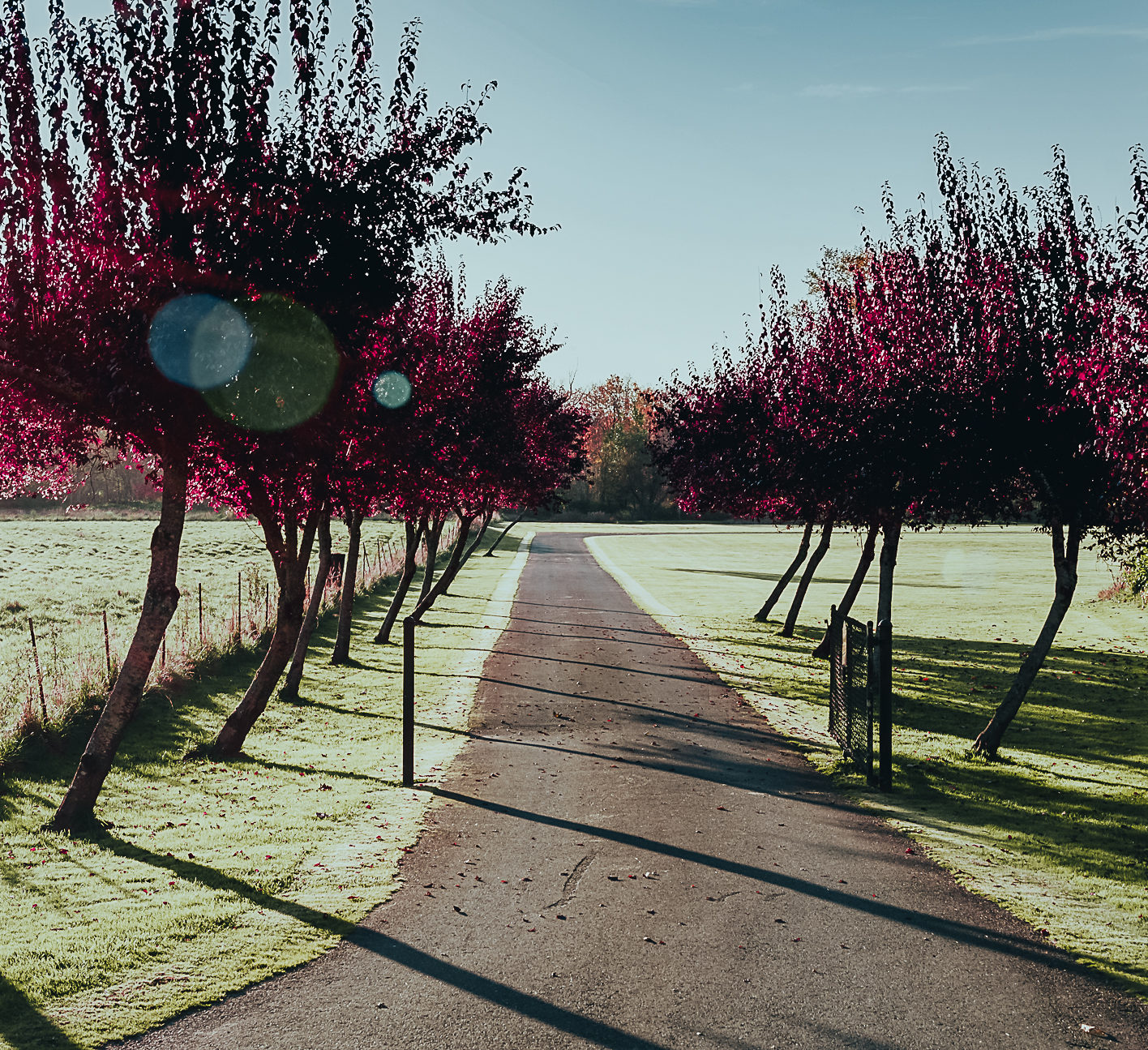
Tree Spacing
No matter how big or small your land is, there are many types of trees you can choose from to get the most fruit from it. For most orchard trees of a standard size, they should be planted about 20 to 50 feet apart, depending on the variety.
For instance, full-size cherry trees need about 35 feet of space. Peach and pear trees need 20 ft. Plum and quince trees need about 25 ft. Last but certainly not least, fig trees can reach up to 50 feet wide if they live long enough.
Dwarf tree varieties are great for smaller spaces because they only need 6 to 8 feet of space between them. Semi-dwarf trees, on the other hand, need about 15 feet.

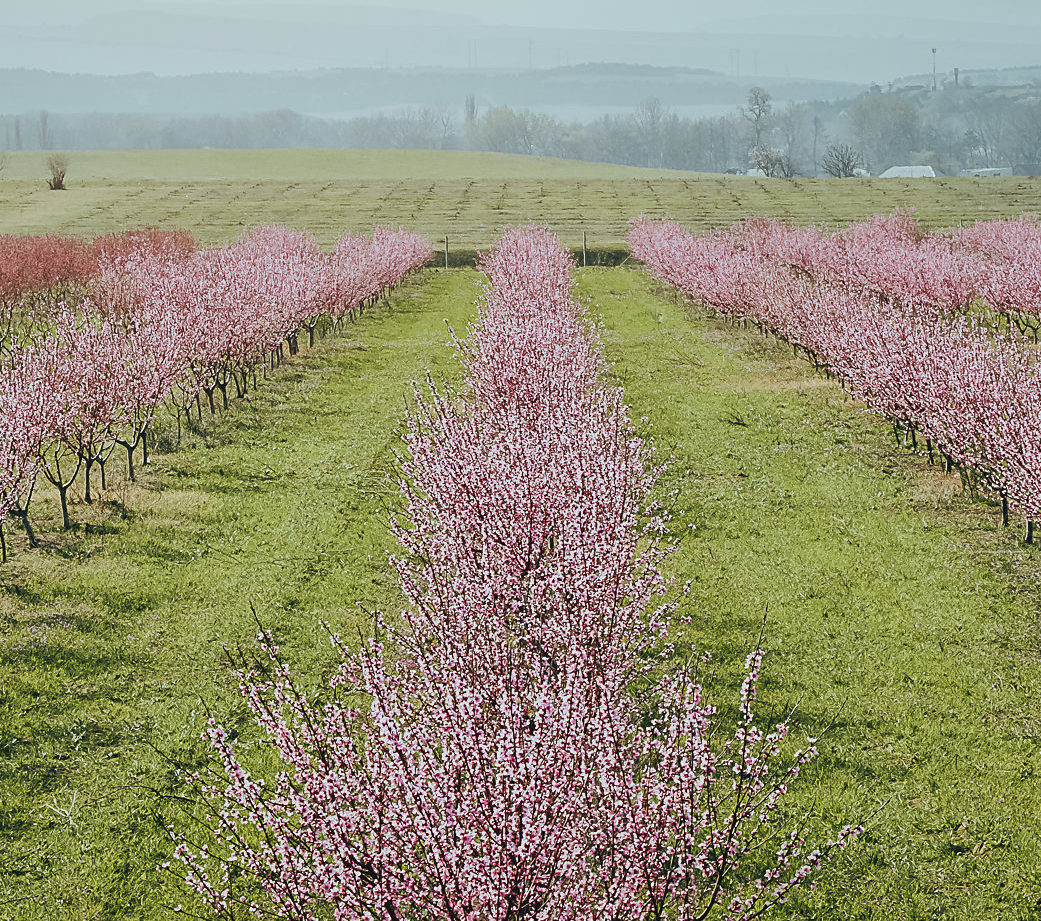
Ideal Spacing for Like-Kind Trees
First things first, avoid placing like-kind trees right next to each other. This is because if one tree succumbs to disease or pests, this damage can spread to neighboring trees.
However, like-kind trees that are dependent upon pollination should not be farther apart than 100 feet, as this may be the farthest distance pollinators are likely to travel.
To find the right balance, one can, for instance, plant a cherry tree, then an apple tree, then an apricot tree, and finally another cherry tree again. It depends on how many kinds of fruit you want to grow, but the idea is to use “alternate row planting” within a larger grid.
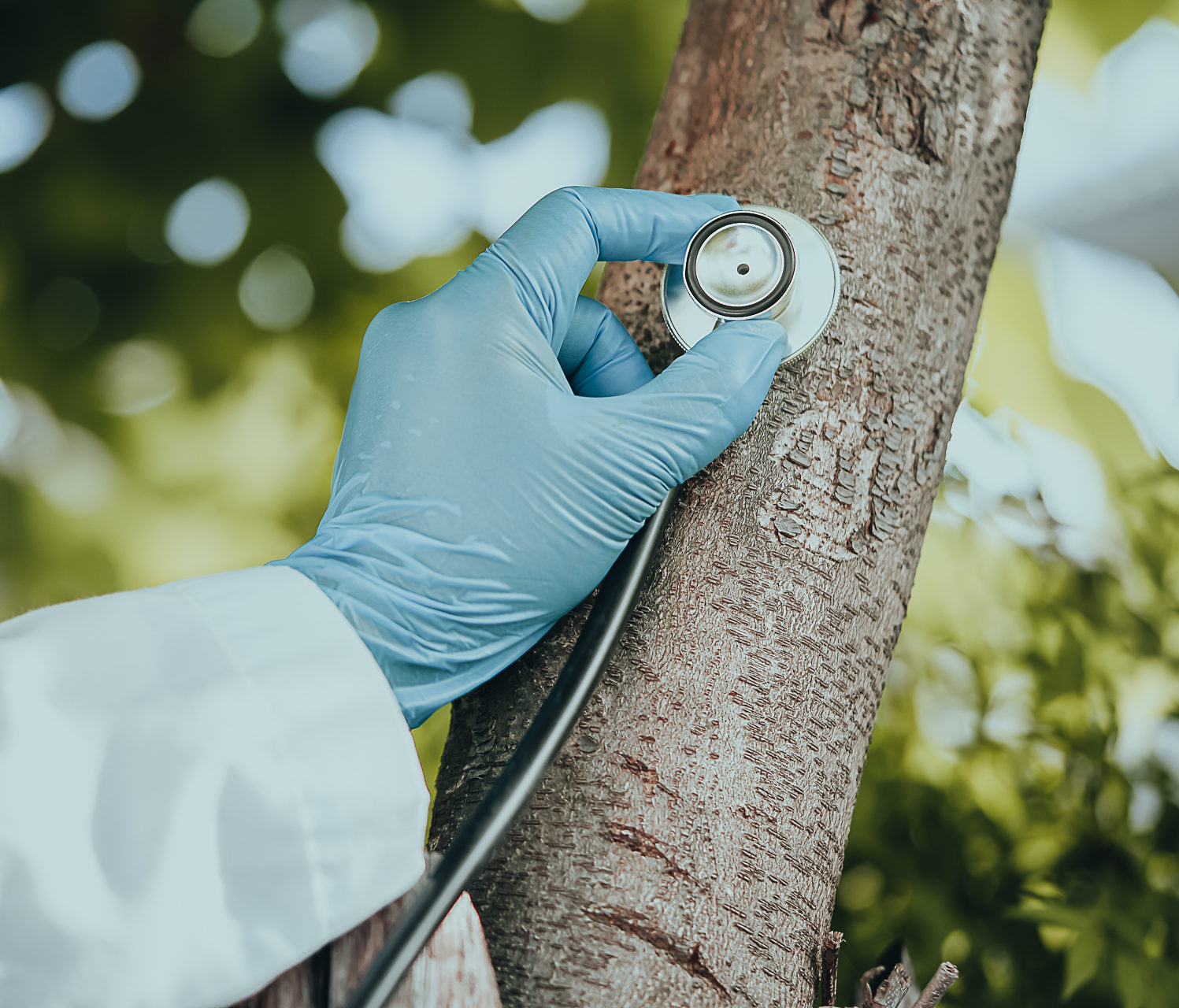
Popular Grid Systems in Use
There are many ways to grow trees for optimal spacing and health. For the best spacing and health of the trees, there are many ways to grow them. Here are some common ones:
This system is often used on flat land. Trees are arranged in a square pattern.
This arrangement better utilizes the space between a group of trees, as seen with the Square Grid System. So, imagine four points on the corners of a square, plus one more point in the center, for tree placement.
Picture the outer points of a hexagon plus the center point. Trees are planted at each point. This system is likely the most efficient because it allows for more trees to be planted on a smaller piece of land.
This growing method works well on sloped or terraced landscapes and can be combined with any of the other 3 systems.


Cover Crops
Cover crops provide a sustainable soil management strategy. Choose native, climate-adapted cover crops that also attract beneficial pollinator populations. These crops should help the soil retain water, prevent erosion, and fix nitrogen.
Cover crop roots should be shallow, so as not to compete with the roots of your orchard trees, which depend upon deeper groundwater. Also, choose cover crops that love the shade, especially as your trees mature and cast more shade.
Additionally, try to use heterogeneous (mixed) perennial cover crops, as they help protect your trees. Mixed cover crops create arthropod biodiversity and encourage natural pest predators. The reason for this is that when there is a diversity of plants, insect pests have a much harder time launching a full-scale attack.
Furthermore, use heterogeneous (mixed) perennial cover crops to help protect your trees.
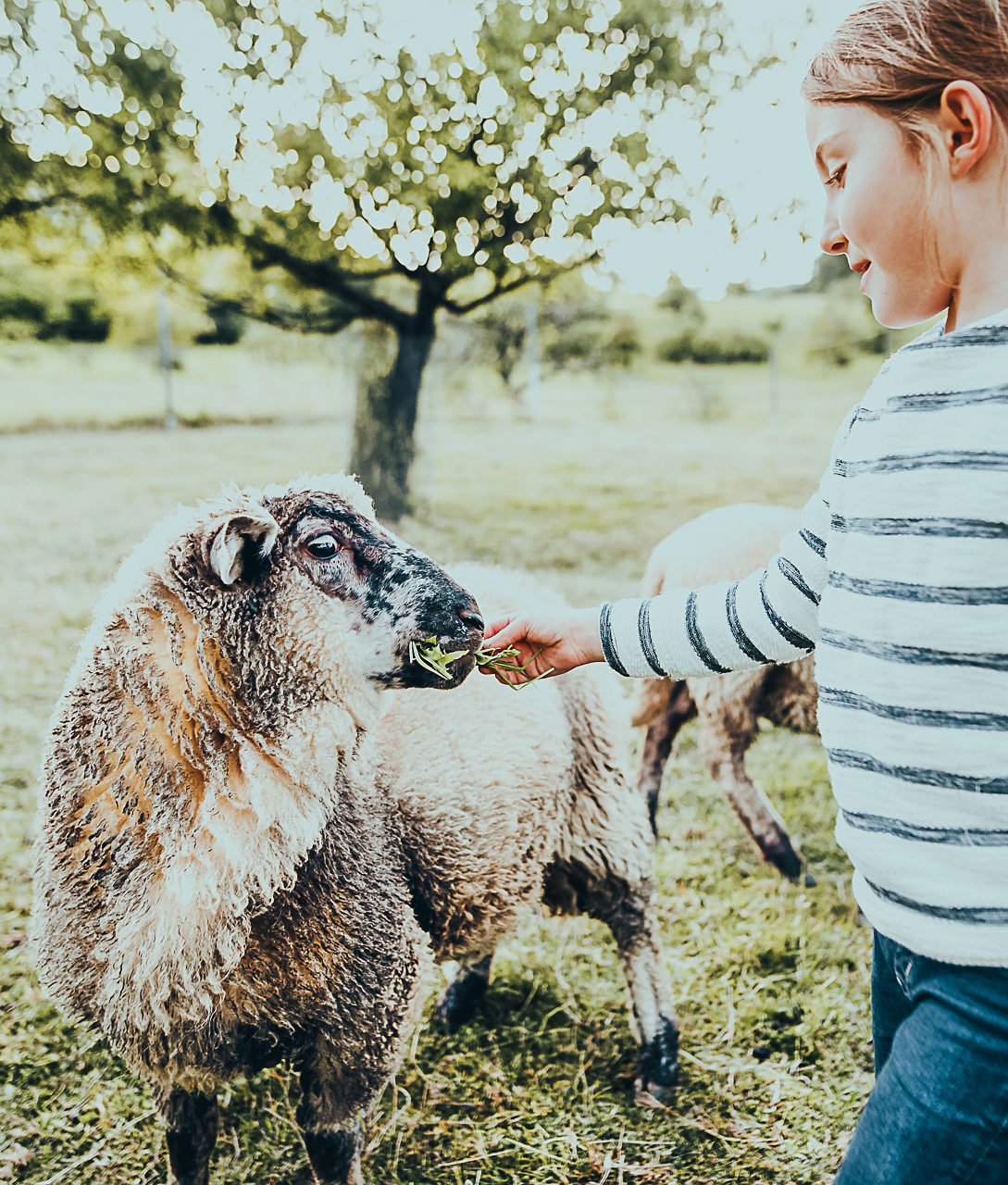
Natural Fertilization Practices
The best time to fertilize your orchid is in the early spring, right before your trees start to bud.
Most people fertilize once a year or every other year, depending on the previous year’s growth. If your trees did not grow properly the previous season, this is one of the telltale signs that they need to be nourished.
This chart will explain how to measure your tree’s growth. Below are a few ways you can feed your trees.
Fish fertilizer is rich in nitrogen and is well tolerated by most plants in the garden as well as the orchard. A little bit goes a long way, though, so always properly dilute fish emulsion fertilizer in water and follow the label instructions.
Keeping worms is a low-maintenance way to create your own fertilizer. You can pretty much feed them and then stash them away for a while. Even better, worm castings provide some of the most nutrient-dense fertilizers available.
Every farm should utilize a compost mound and repurpose all farm waste. From this compost, a wonderful compost tea can be brewed and then applied to the soil around your orchard trees.
If you decide to add grazing sheep to your orchard system, there are a few considerations. Before you let sheep into your mature orchard, be sure to wrap the trunks of your fruit trees in loose-fitting hardware cloth, also known as metal mesh. This mesh will also protect your trees from deer, rabbits, voles, moles, and other opportunistic wildlife.
They drool at the thought of freshly fallen fruit; they consider the leaves of accessible branches to be a delicacy; and they will waste no time tearing the delicious bark off your trees.
Keep in mind, though, that sheep manure is a great fertilizer not only because it is rich in nitrogen but also because it breaks down slowly, releasing nutrients over time. Sheep can also be used to keep the areas between trees from becoming overgrown.
Rabbit droppings are well known for their outstanding ability to fertilize plants. It also has some of the highest levels of nitrogen and phosphorus. Additionally, this manure breaks down quickly.
Chicken droppings make a great fertilizer. Just be sure to keep the chickens out of your orchard when your trees are fruiting, as your chickens may try to steal some of your fruit.
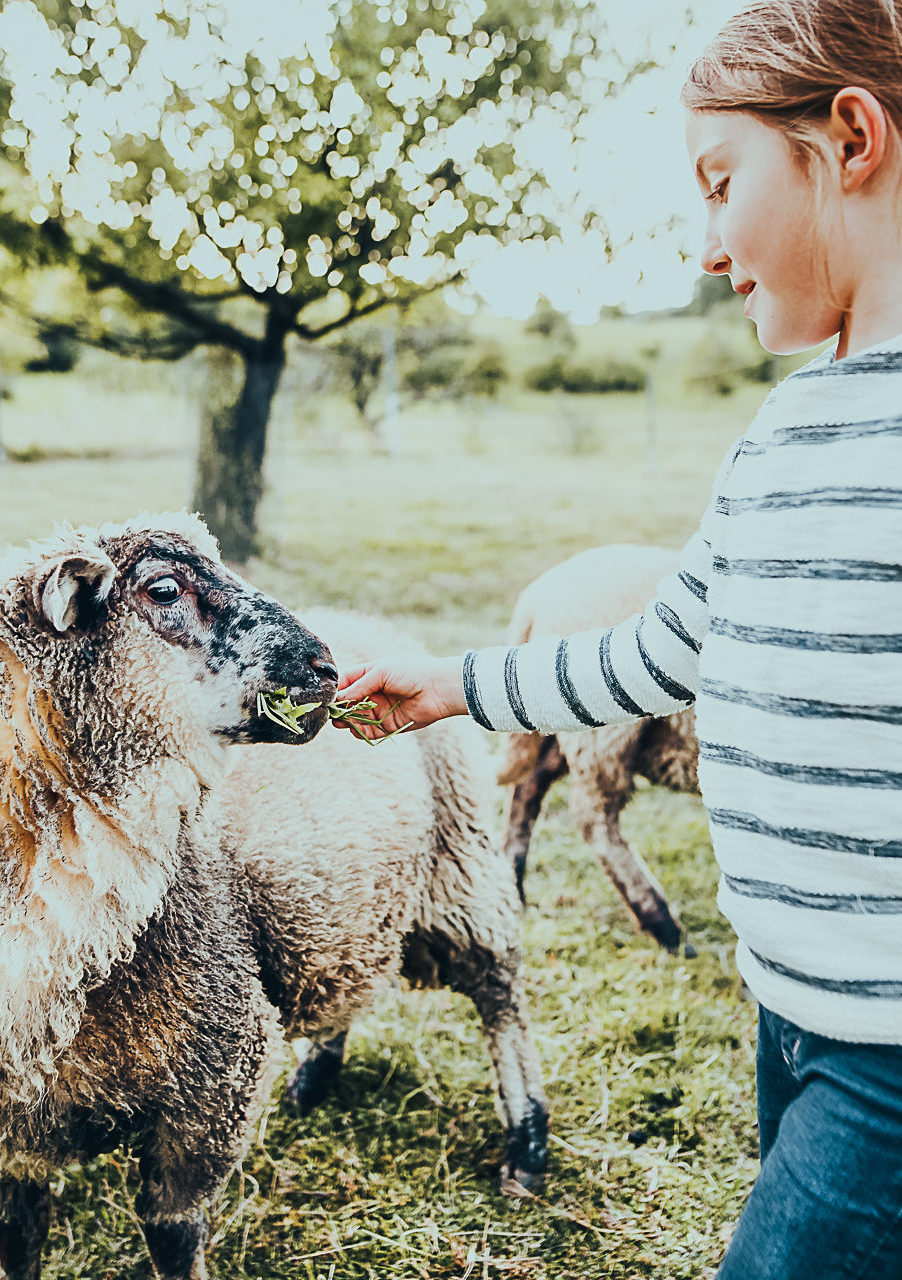
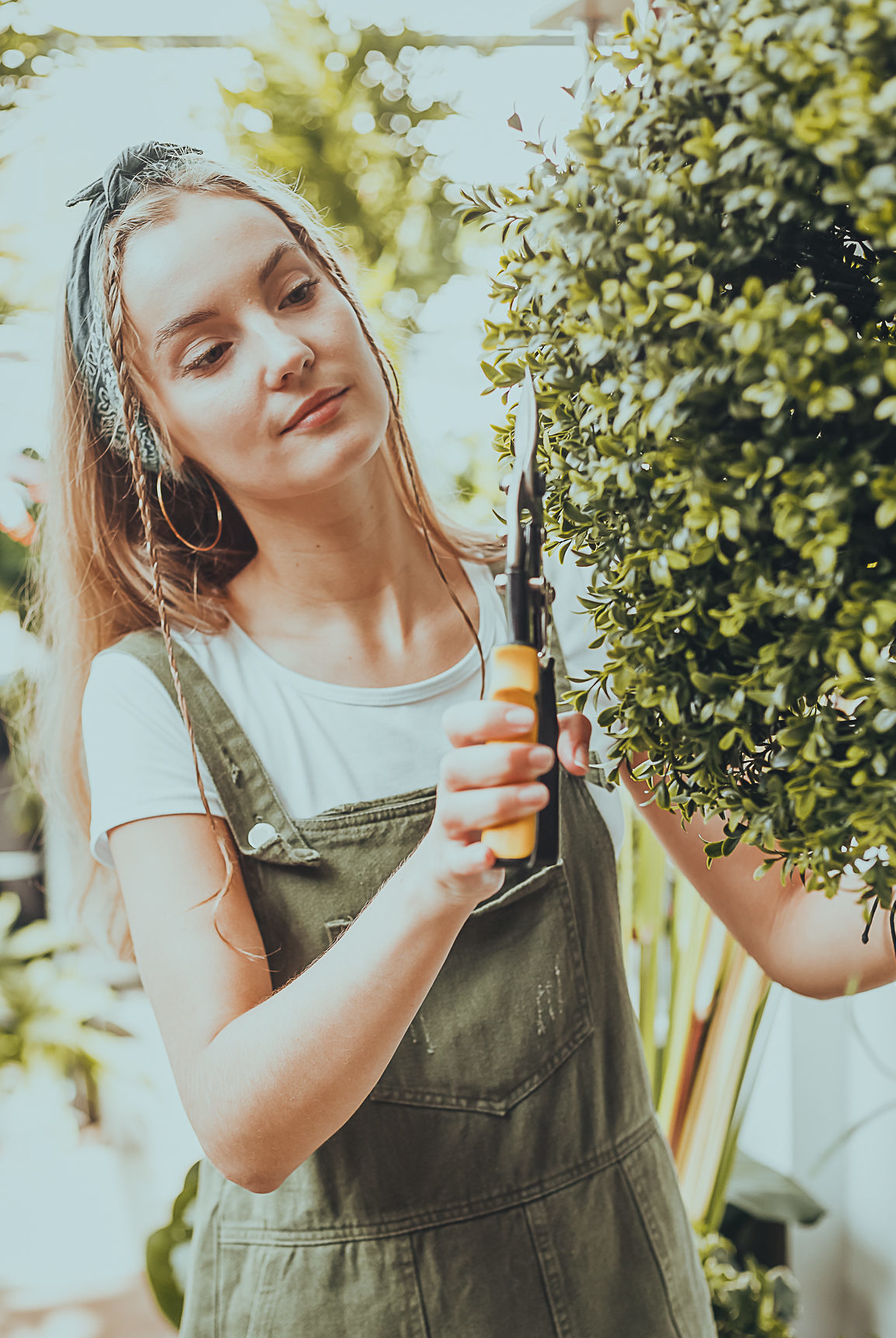
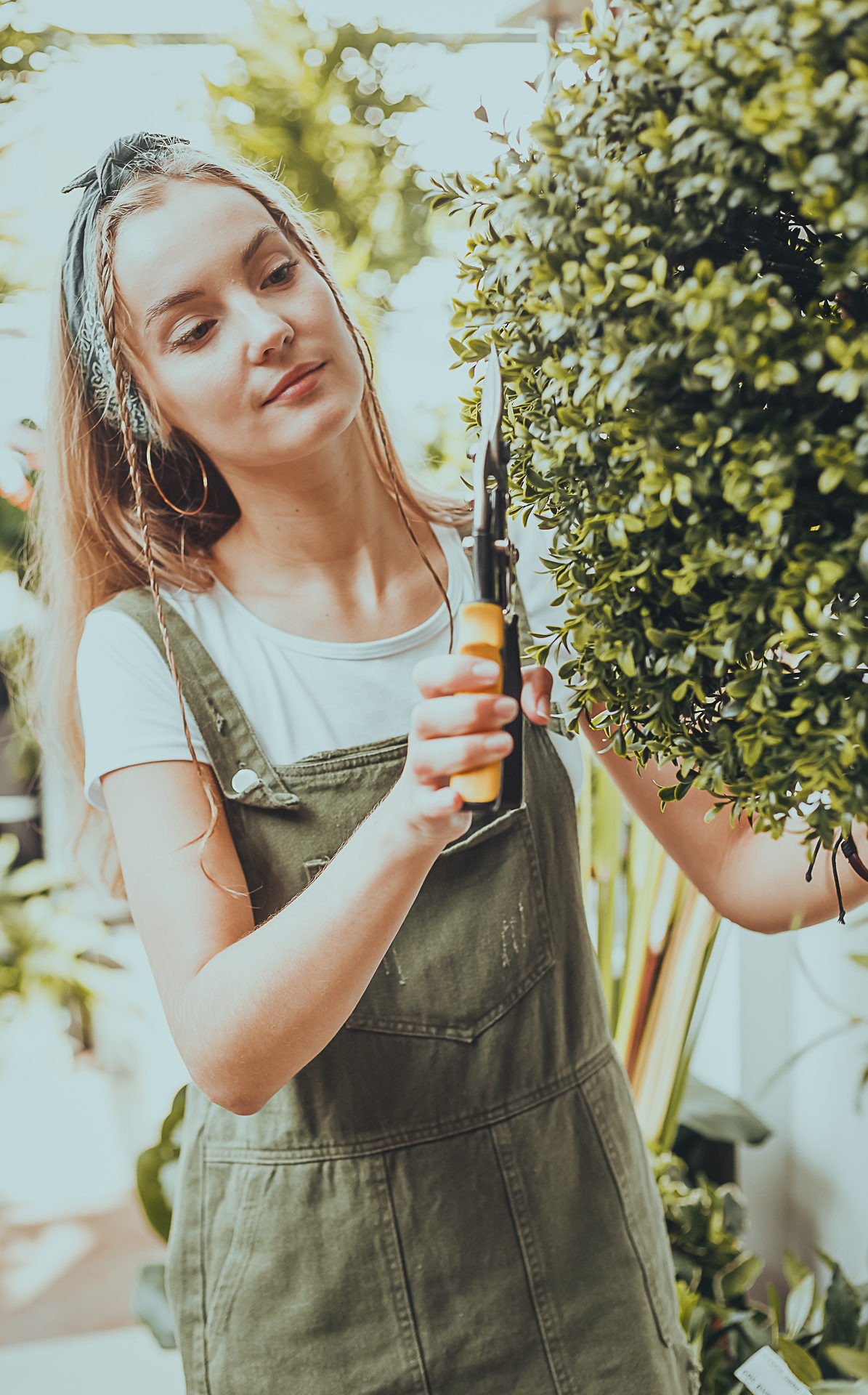
Trees should be pruned and mulched on a regular basis
Pruning is a great way to improve the overall health of your orchard trees, and it will also help your trees produce more fruit.
Pruning is most important during the first 3–4 years of a tree’s life cycle. This is because the most growth occurs at this time. Pruning should be done in late winter or early spring, before budding.
The early years are the optimal time to train and shape your fruit trees. A good rule of thumb is to encourage a wide and even spacing of support branches around the main central trunk of each tree. You will want to remove vertical branches and sucker branches that grow out from the base of the trunk. Vertical branches seldom produce fruit and clog the interior canopy space of your trees.
Seasonal fruit can be sold, shared with neighbors, and loved ones, or preserved for later use.
Also, cut off branches that invade the space of nearby support branches. Once your tree is established, pruning will get a lot easier and will only require light maintenance from year to year. Also, depending on the type, your tree should start to bear fruit within 3 to 6 years.

Sustainable Orchards: a veritable gold mine of opportunity
If you plant and care for orchard trees the way this article says, they will continue to grow and do well year after year. They will require very little maintenance or attention through much of the season. This makes orchard trees a wonderful food crop to add to your farm or small homestead.
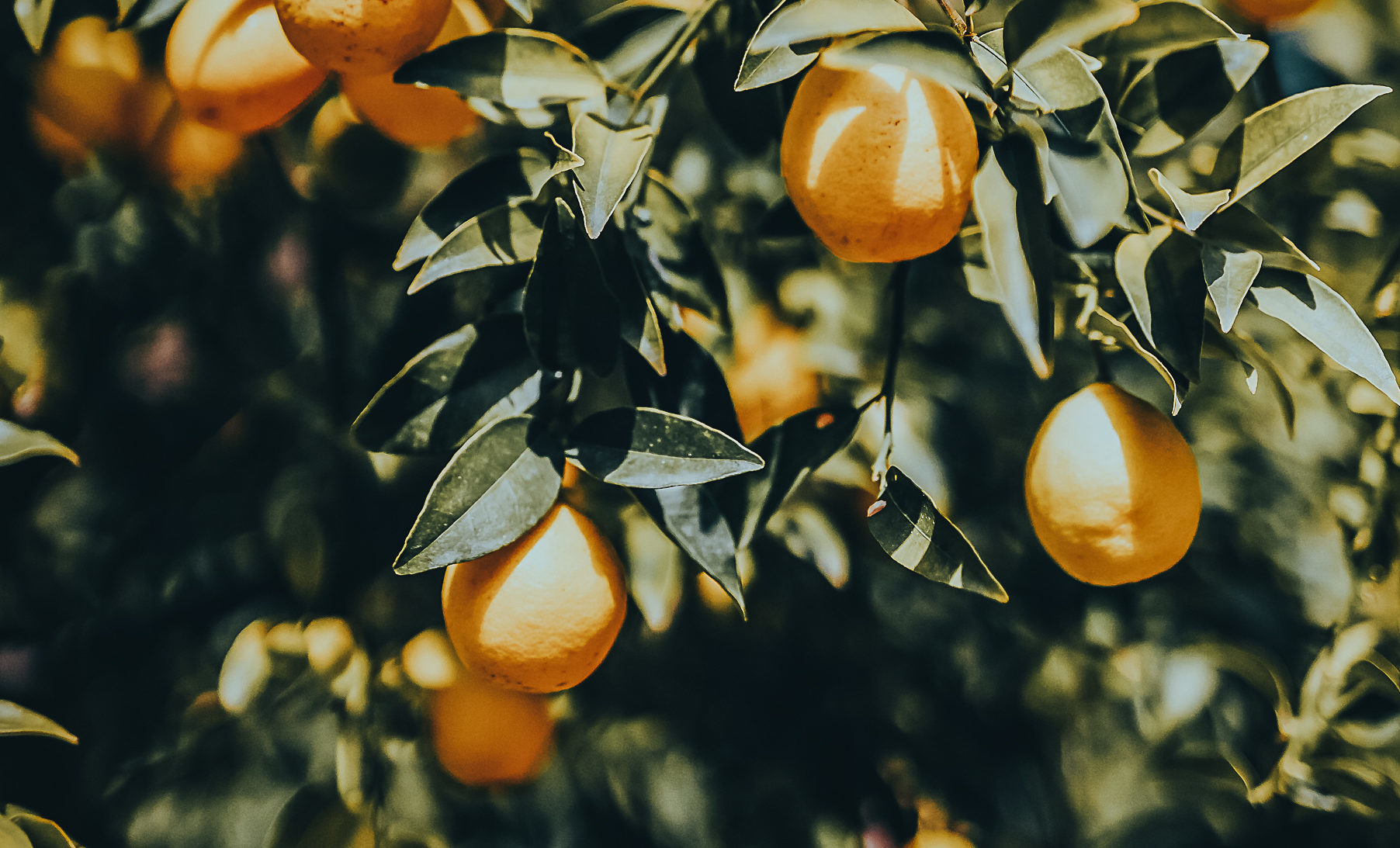
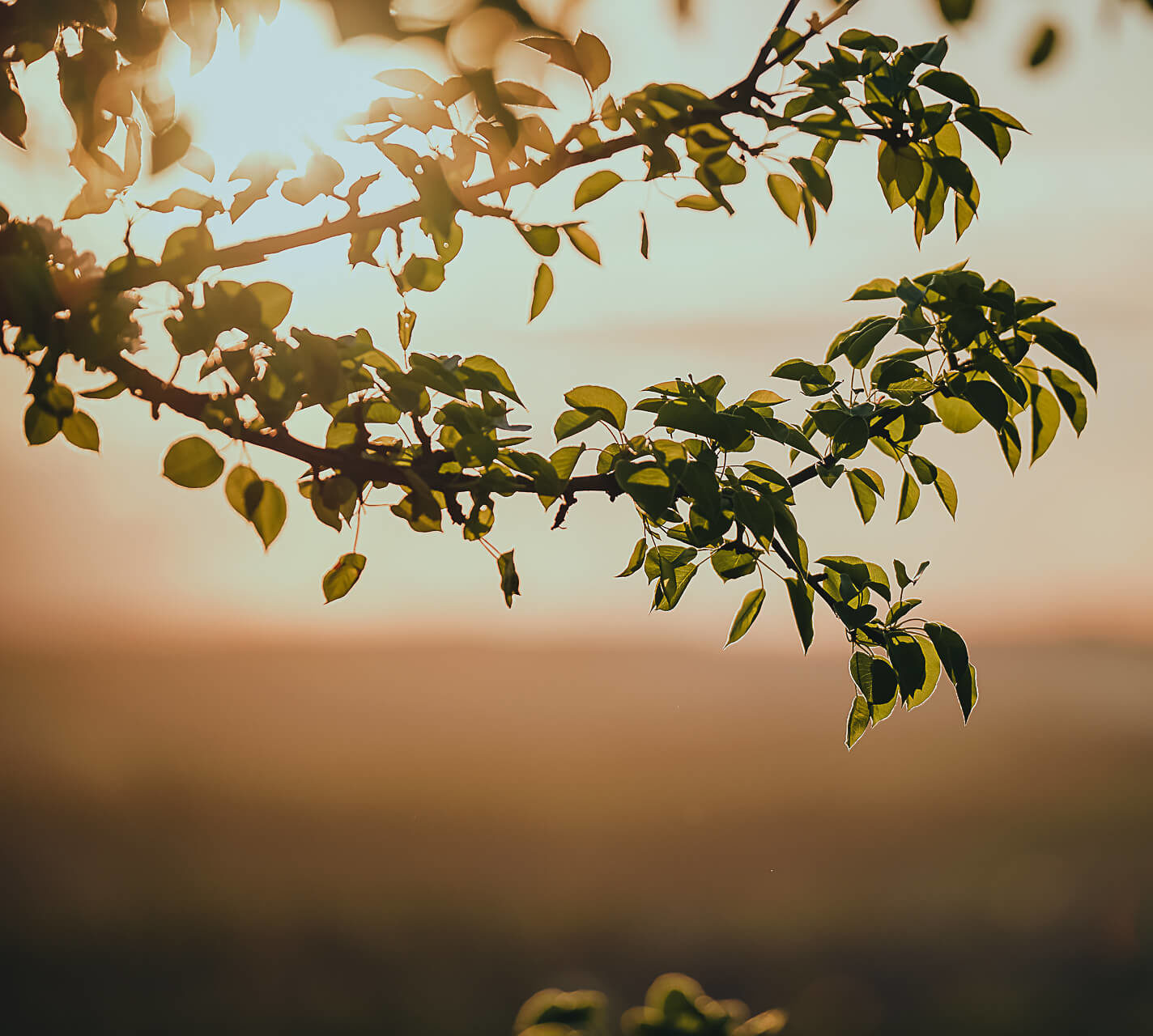
SUMMARY:

Growing your own orchard trees is a great way to provide fresh fruit for your family and benefit local wildlife. Established fruit trees are relatively simple to care for, necessitate little maintenance, and provide substantial rewards as fall approaches. To extend the life of your orchard, it is important to make water capture and retention easier, set aside a location where extra rain can collect and be stored, and use mounds and berms to promote optimal water drainage, protect the roots, allow for greater nutrient uptake, promote deeper root growth, and boost overall vitality. Choose orchard trees that are hardy and indigenous to your area, choose organic, heirloom, and non-GMO tree varieties only, and plan ahead to create tree groves and clusters that will last for generations. Plant trees that self-pollinate can be planted anywhere within the growing grid without regard for pollination spacing.
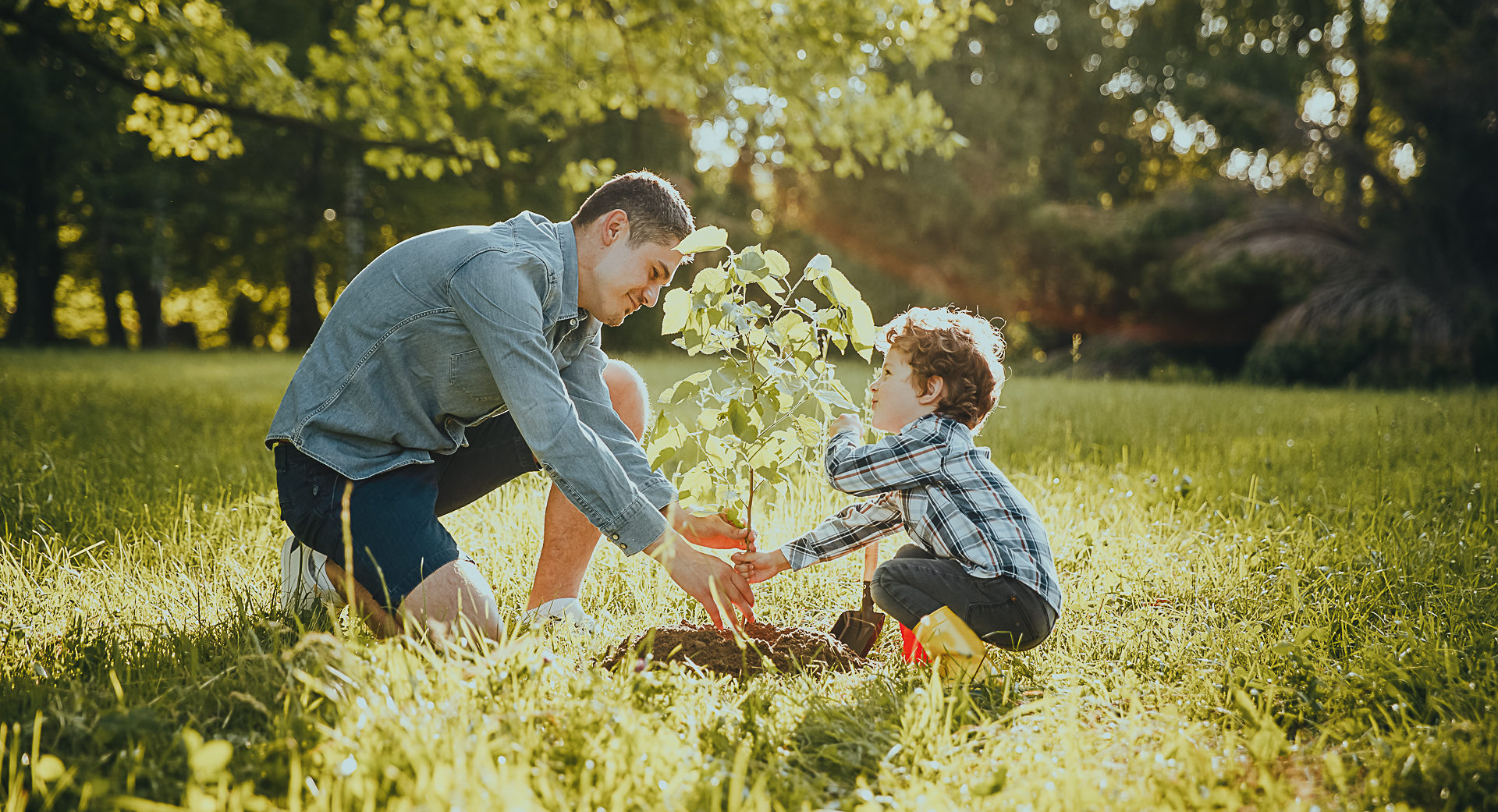
Tree space should be planted 20-50 feet apart, depending on the variety. Figs can grow to 50 feet wide if they live long enough, and dwarf tree varieties are ideal for small spaces. Ideal tree spacing for similar trees is to avoid planting trees of the same species next to each other, and like-kind trees that rely on pollination should not be separated by more than 100 feet. Grid systems in use include square, diagonal, hexagonal, and contours. Cover crops are a long-term soil management strategy, and should be native, climate-adapted cover crops that will also attract beneficial pollinators.

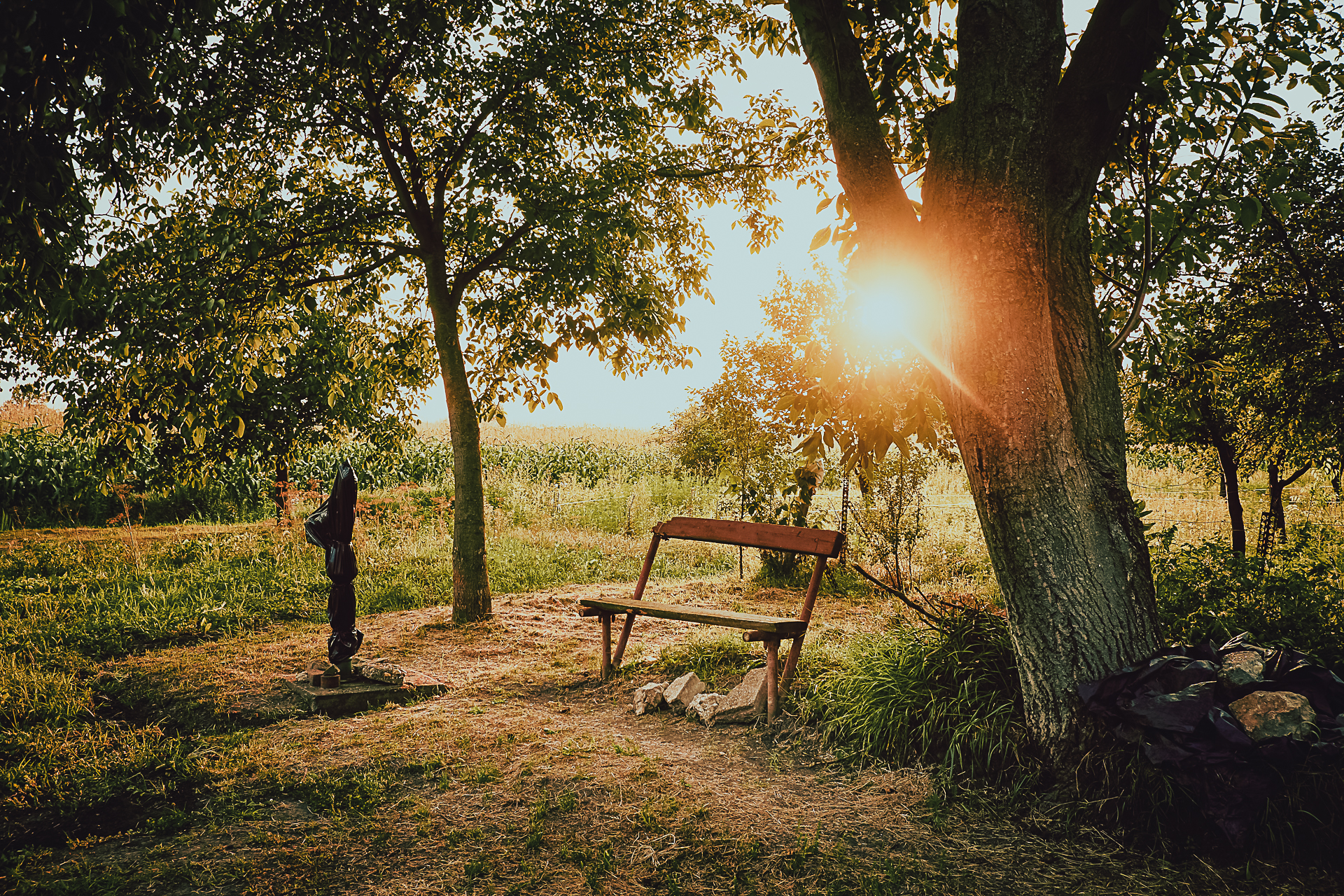

The roots of cover crops should be shallow so that they do not compete with the roots of orchard trees. Use heterogeneous (mixed) perennial cover crops to protect your trees and natural fertilization methods such as emulsion of fish, castings of worms, compost tea, and sheep on the grass to increase arthropod biodiversity and encourage natural pest predators. Be sure to wrap the trunks of your fruit trees in loose-fitting hardware cloth and keep deer, rabbits, voles, moles, and other opportunistic wildlife away from them. Rabbit droppings, chickens raised outdoors, and sheep can be used to keep overgrown areas between trees under control. Pruning is an excellent way to improve the overall health of orchard trees while also increasing fruit production.
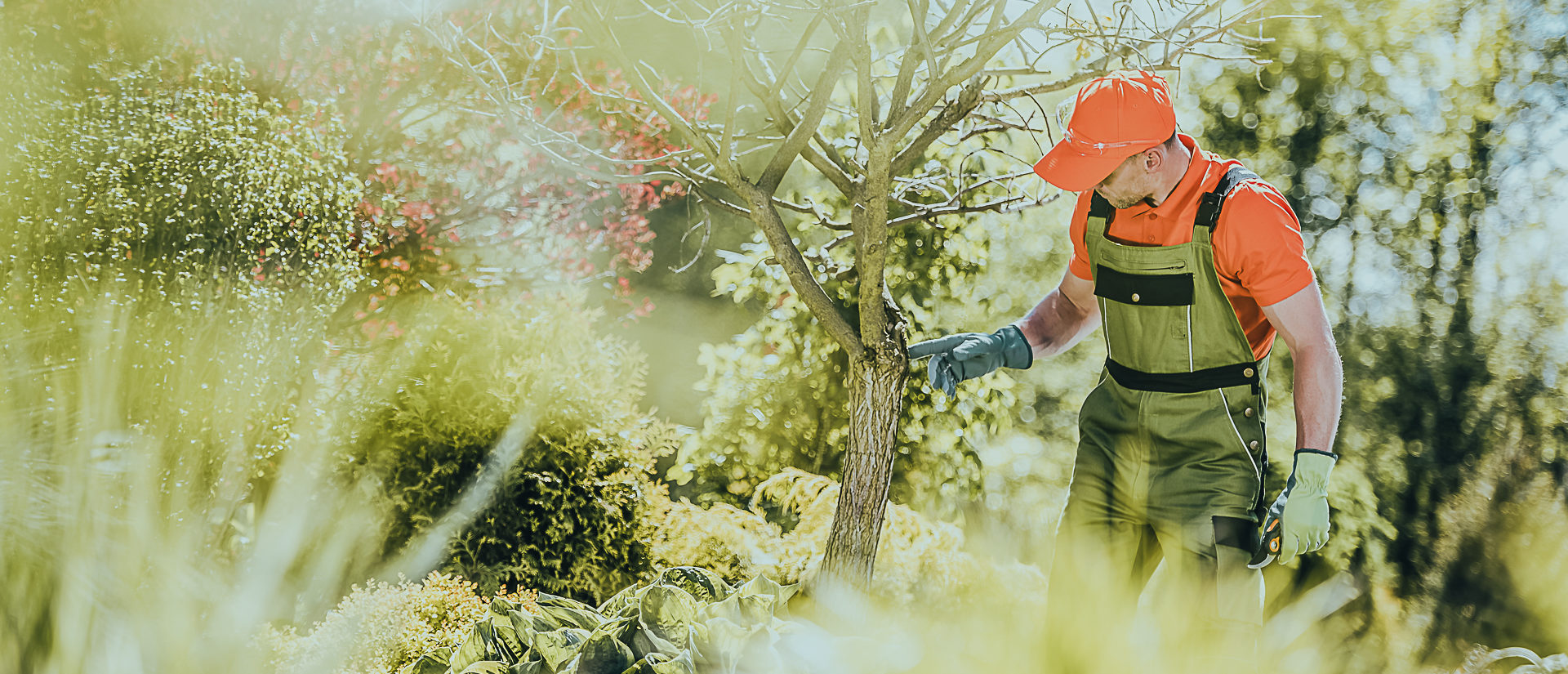
Pruning should be done before budding in late winter or early spring, and should encourage wide, even spacing of support branches around each tree’s main central trunk. Vertical branches and sucker branches that grow out from the trunk should be removed. Once established, pruning will become much easier and require only minor maintenance from year to year. Orchards are a veritable gold mine of possibilities, and they will continue to grow and thrive year after year.




